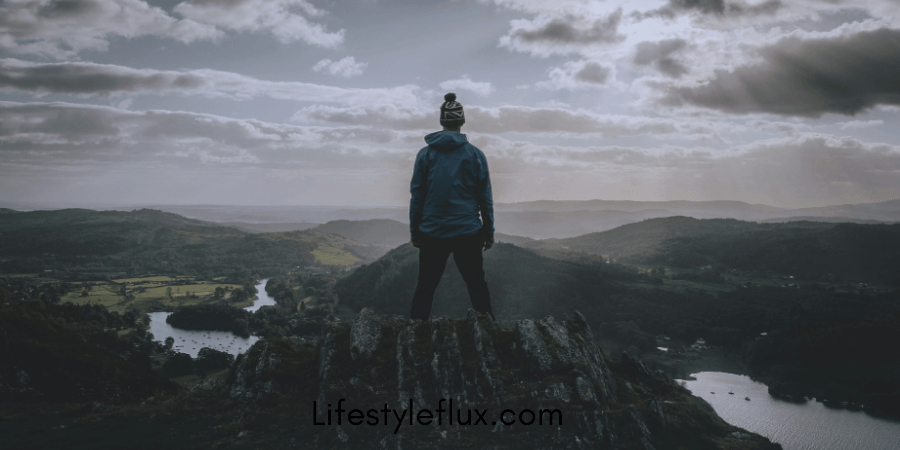Self-doubt doesn’t usually hit all at once. It creeps in quietly, little by little, until it’s coloring how you see your choices, your strengths, and even your future. That’s where 7 Simple Steps to Overcome Self-Doubt comes in—not as a one-size-fits-all solution, but as a clear path forward.
Because let’s be real: building self-confidence isn’t about flipping a switch. It’s about laying the groundwork, testing your boundaries, and slowly changing how you see yourself.
These seven steps are designed to guide you through that process. You won’t just be reading about change—you’ll be practicing it, one intentional action at a time.
Table of Contents
1. Learning the Long Way
Building self-confidence is a slow, step-by-step process. When you first decide to be more self-assured, your mind naturally jumps 10 steps ahead. You imagine yourself diving headfirst into all kinds of new challenges.
You picture a future where you’re not afraid to be a leader, a creator, or a pioneer. You could have engineered this version of yourself that’s confident, decisive, and successful. Could all of those huge changes be waiting right around the corner?
Well, in some ways, they are. No matter what stage you’re at right now—no matter how indecisive or doubtful you are—self-confidence is a realistic and attainable goal. But there’s a little bit of prep work that you have to do first.
Developing self-confidence is like learning a new subject. Everyone wants to skip ahead to the most exciting bits at the end. However, none of those complicated ideas will make sense unless you lay the proper foundation.

It’s like performing surgery without learning how the human body works or researching black holes without knowing any physics.
My point here is that your groundwork plays an important role. Without that strong foundation, you can’t develop real self-confidence. You won’t learn how to genuinely have faith in yourself. Yeah, the basics don’t sound as exciting on the surface, but they give you the tools that you need to be more decisive in everything you do.
2. Practising Inside Your Comfort Zone
So, where does the groundwork start? What’s the first thing you should be doing to get rid of self-doubt? Before you can fearlessly tackle new challenges, you have to learn how to take chances. You have to practice using comfortable risks.
Okay, imagine you’re an amateur stuntman. For your first-ever movie, you need to fall from a helicopter hovering almost a hundred feet off the ground. But you’ve never fallen off anything that high before.
So, what’s the best way to learn? Should you take the plunge and risk hurting yourself? Or should you start with something short and then gradually fall from higher and higher obstacles?
Comfortable risks are just like those shortfalls. They give you the chance to put yourself out there in a secure environment. But what does a comfortable risk look like? Generally, it’s something simple, like talking to someone new or getting up in front of a crowd.

The important thing is not to worry about making lasting changes or setting yourself on a new path. The entire point of this step is to get comfortable with the idea of taking risks, so it’s more than okay to remain well within your comfort zone.
For a more real-world example, let’s say you’re an artist. What would a comfortable risk look like in the context of your life? Well, you might try experimenting with a new medium or meeting with a group of like-minded professionals.
Neither one is that different from what you usually do, but there are still things that you’ve never done before. There are still risks that you’ve never taken. And when it comes to building self-confidence, that’s really all that matters.
3. Expanding Your Bubble
Taking comfortable risks prepares you for this third step: pushing the boundaries of your comfort zone. Now, most of us have small, very specific bubbles where we feel strong and safe. But little by little, we can add new skills, people, and environments.
Now, hold on—I’m not expecting your comfort zone to double in size overnight. I hear this piece of advice a lot: The best way to get rid of indecisiveness is to throw yourself straight into the deep end—to force yourself to either sink or swim.
But what if you never learned how to swim? Why would you dive into the deep end when you don’t stand a chance?
Building self-confidence is a slow and methodical process for a reason. Instead of jumping into the deepest part of the pool, begin in the shallow end. Once you’re comfortable in three feet of water, then try four and then five.
Eventually, you’ll feel comfortable swimming anywhere in the pool—not because you haphazardly threw yourself into the deep end, but because you slowly expanded your bubble until the entire pool fell into your comfort zone.

So, what makes this strategy so much safer and more effective than diving right in? Well, the sink-or-swim method doesn’t give you any backup plan. For some people, that’s a good thing—they need that sense of urgency to keep them motivated. But most people want something comfortable to fall back on when things go wrong.
That safety will give you the confidence to be more decisive and tackle the unknown. Every risk you take will feel smaller and less nerve-wracking because you always know your comfort zone is right behind you.
4. Uncover Your Baseless Assumptions
As your comfort zone grows larger and larger, you might discover talents that you never knew you had. You might have spent years telling yourself you weren’t capable of something, only to find out you’re just as qualified as anyone else.
Many of us make baseless assumptions about who we are and what we can do. We convince ourselves that there’s a limit to our success—that we can never go beyond a certain point. Well, this next step is about challenging and breaking down those barriers.
Take that artistic leadership role you found in Step Two. Before taking that position, you might have assumed you weren’t qualified to lead. Maybe you told yourself that you weren’t good enough to teach, guide, or help other people. But by expanding your comfort zone, you’ve proved yourself wrong.
The simple truth is that your assumptions should never define your limitations. You’re capable of much more than you think you are. That’s why Step Four is to identify all the assumptions that are standing in your way.
Now, of course, that isn’t always as easy as it sounds. So here’s a trick that’ll help you figure things out: Think about your dream job. What would you do every day? What would you be responsible for? And then ask yourself this: If someone gave you that rare opportunity right now, would you take it?
Dream job or not, most people would probably say no, not because they don’t know enough or because they lack experience. They turn down their dream job because they don’t feel confident they can rise to the challenge.
So, what is it that you see in others that you don’t see in yourself? Charisma? Passion? Creativity? Take note of whatever traits you don’t think you have because those are your faulty assumptions. Those are the walls that you’ve created for yourself, and those are the lingering doubts that are stifling your potential.
5. Break the Norm
If you’ve been consistent with the last four steps, you can start doing something that very few people ever do: You can stand out. It takes a decisive and confident person to go their own way—to ignore what’s expected or normal and to do something extraordinary.
In many ways, social norms are like a giant bubble—one massive comfort zone that so many of us live safely inside.
But as you gain more self-confidence, you’ll feel empowered to break out on your own and exceed expectations—not just the ones that other people have of you, but the expectations that you have of yourself. Because nothing destroys self-doubt better than achieving a goal you never thought possible.
6. Revisit Your Progress
People often lose self-confidence when they feel like they aren’t making any progress. They take a hard look at their goals and realise I still have a long way to go. That can be really demoralising. It can make you doubt the choices that you’ve made or the path you’ve chosen.
But this step will help you get your mind back on track. Whenever you’re feeling aimless or intimidated, just stop looking at how far you have to go and start looking at how far you’ve come. The vast majority of people don’t realise how much progress they’re making at the moment.
As you take comfortable risks, expand your bubble, and challenge your assumptions, you may never notice any big changes in your life. But that doesn’t mean you’re standing still. So, every few months, set aside some time to retrace your steps. Compare your past to your present, and chances are, you’ll have made a lot more progress than you thought.
7. Give Reflective Feedback
The final step is to give yourself honest feedback. As you reflect on your journey thus far, it’s very important to acknowledge the positives, but it’s equally important to make note of your mistakes and failures.

It can be really hard to evaluate yourself honestly, so I like to treat it like a job review for someone else. Take a look at their past and ask yourself:
- Did they move in the direction that they planned?
- Are they accomplishing as much as they hoped they would?
- Have any habits or goals slipped through the cracks?
Now, all of these questions will help you hone in on your responsibilities moving forward. You might also discover a few patterns and blind spots that you never would have noticed otherwise.
While revisiting your progress gives you a much-needed boost of morale, reflective feedback ensures that you’re always on the right path.
Conclusion:
Overcoming self-doubt isn’t about becoming someone else—it’s about finally seeing the full picture of who you already are.
The more you challenge your comfort zone, question your assumptions, and track your growth, the more you’ll realize how capable you’ve been all along. Confidence doesn’t show up overnight, but when you keep showing up for yourself, step by step, it has no choice but to follow.
Sources:
https://www.forbes.com/sites/brettwhysel/2018/06/13/decisive/#5f23091a6d6f
https://www.psychologytoday.com/us/blog/hope-for-relationships/201507/7-ways-to-beat-self-doubt
https://www.success.com/11-genius-tips-to-be-more-decisive
https://www.themuse.com/advice/4-ways-to-get-better-at-making-snap-decisions-without-feeling-guilty

Founder and CEO of Lifestyleflux.com, I bring years of expertise in self-improvement, wellness, and personal development to help you lead a happier, more balanced life. Through practical insights, eBooks, and consultations, I share actionable strategies rooted in experience and a passion for empowering others to unlock their full potential.

